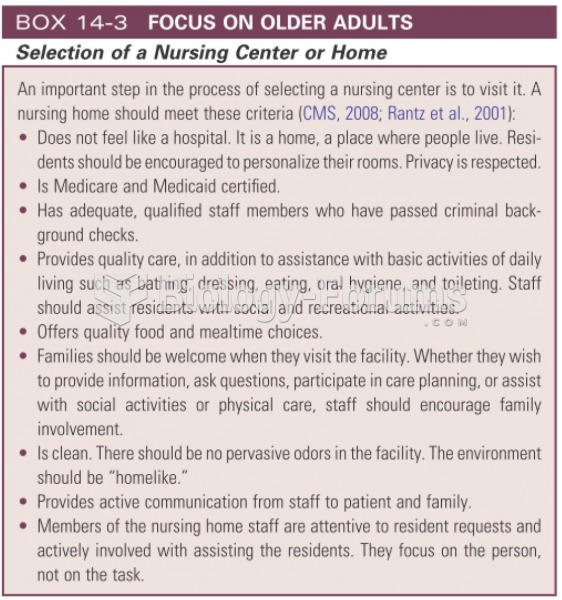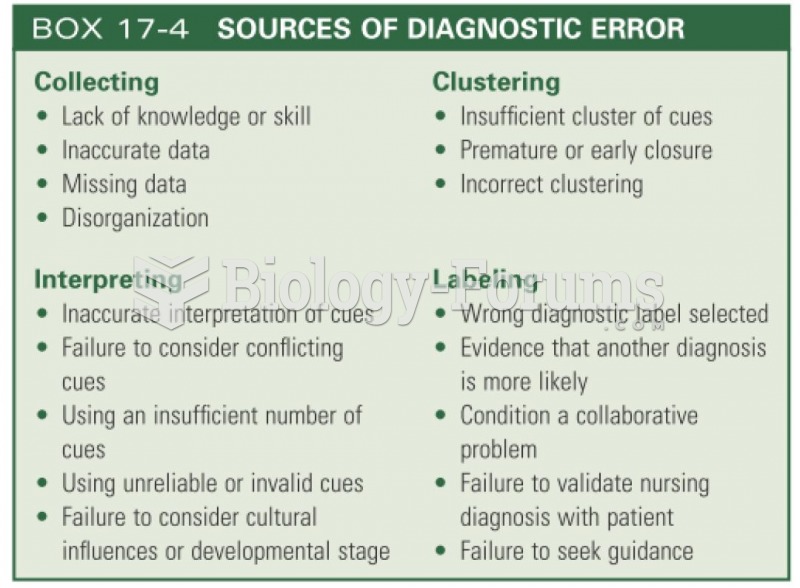Answer to Question 1
ANS: A
Choose interventions to alter the etiological (related to) factor or causes of the diagnosis. If the etiology is impaired verbal communication, then the nurse should choose an intervention that will address the problem. Providing the patient with a writing board will allow the patient to communicate by writing because the patient is unable to communicate verbally at this time. Obtaining an interpreter might be an appropriate intervention if the patient spoke a foreign language. Assisting with swallowing exercises will help the patient with swallowing, which is a different etiology than impaired verbal communication. Asking the family to provide a sitter at all times is many times unrealistic and does not relate to the impaired verbal communication; the goal would relate to the loneliness.
Answer to Question 2
ANS: A
The identified problem, or nursing diagnosis, is constipation. Therefore, the outcome should be that the constipation is relieved. To measure constipation relief, the nurse will be observing for the patient to have a bowel movement. During planning, you select goals and expected outcomes for each nursing diagnosis or problem to provide clear direction for the type of interventions needed to care for your patient and to then evaluate the effectiveness of these interventions. Not taking pain medications may or may not relieve the constipation. Although not taking pain medicines might be an intervention, the nurse doesn't want the patient to be in pain to relieve constipation. Other measures, such as administering laxatives or stool softeners, might be appropriate interventions but they are not outcomes. The patient walking unassisted to the bathroom addresses mobility, not constipation. The patient may need to walk to the bathroom to have a bowel movement, but the appropriate outcome for constipation is that the constipation is relieved as evidenced by a bowel movementsomething that the nurse can observe.







